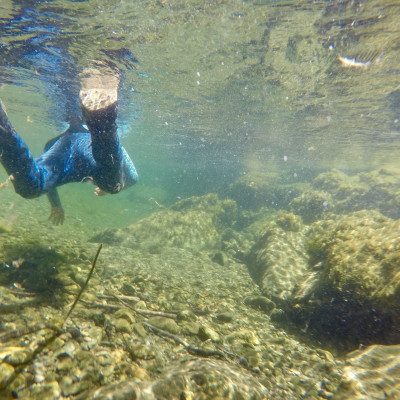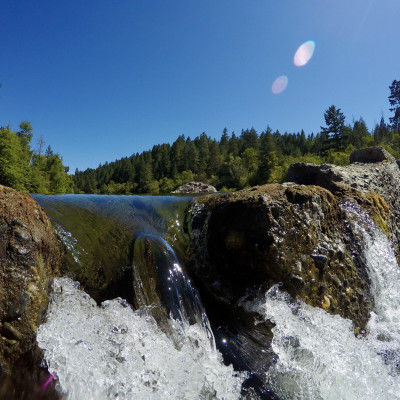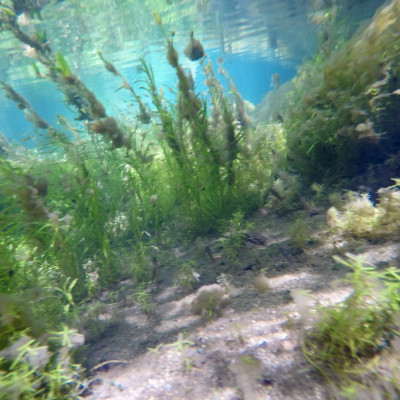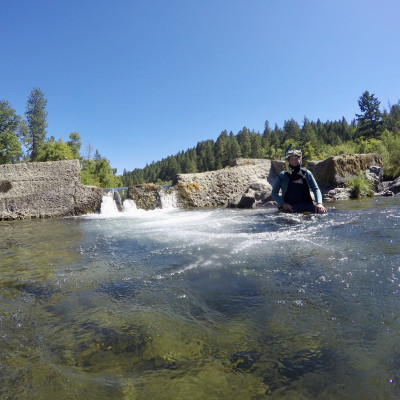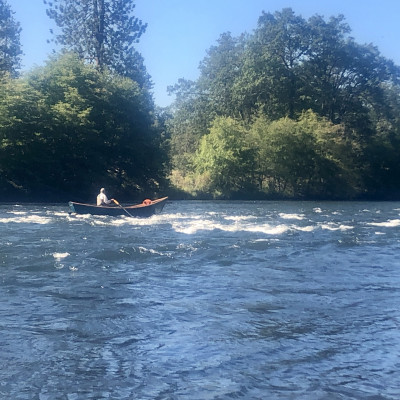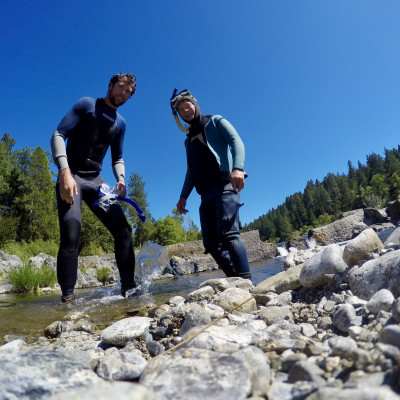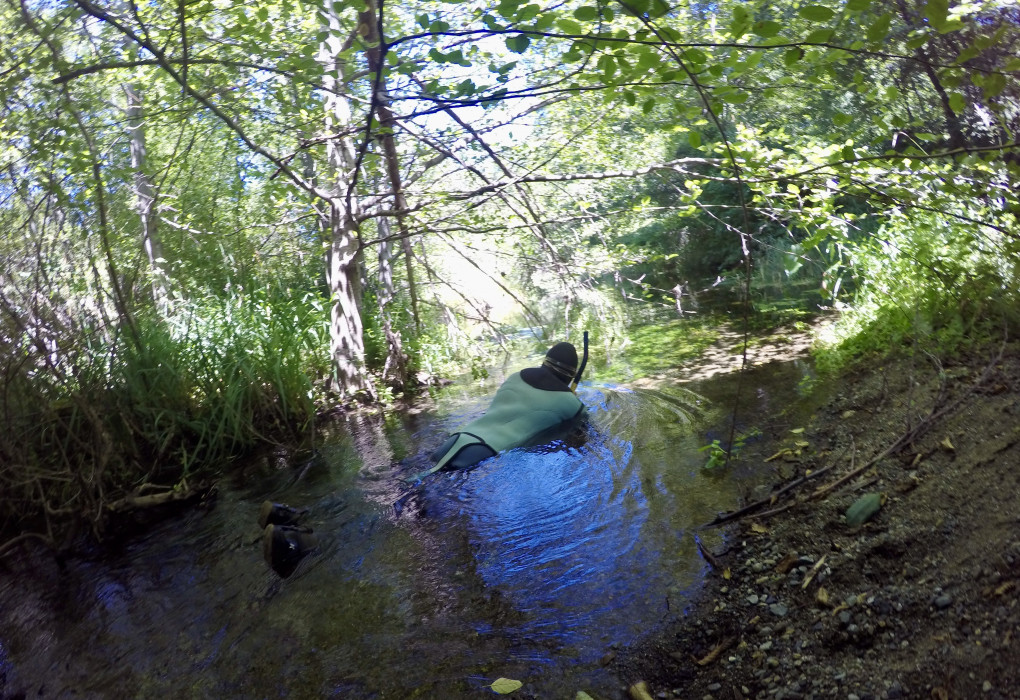Rogue River Discovery
A high desert surrounded by southern Oregon’s most urbanized area, the Rogue Valley presents a diverse landscape with unique challenges in conservation. Last week, I visited the area with Native Fish Society River Stewards and partners in conservation to explore how I could best support the region in restoring abundant wild fish, free-flowing rivers, and thriving local communities.
I started by visiting the local fly shops, talking with them about current river conditions and their observations in the Rogue Basin. Ashland Fly Shop, a tremendous supporter of NFS, was wonderful. The opportunity to meet and extend a thank you for their support was priceless during my short visit. If you are in the area and need advice or gear check them out.
I was able to tour the upper ends of Bear Creek and Emigrant dam. Each area poses struggles for the small watershed that flow through Medford. Our River Stewards for Bear Creek, Jim and Rachel Andras, were busy during my visit so I was unable to connect to understand other major challenges, but will revisit them in the near future.
Later that day I connected with Shari Witmore, a fisheries biologist from the National Marine Fisheries Service. Shari focuses on the Klamath Basin, restoring healthy populations of fish and a sustainable free-flowing river. Her insight into the challenges, opportunities, and strategic plan for the Klamath River is so valuable to the agencies and NGOs involved. She has educated me on the importance of the Klamath Region, sharing how Native Fish Society can support the ongoing work of all parties working to restore a free-flowing Klamath River.
That evening, I met Jim McCarthy of WaterWatch of Oregon to discuss dams and conservation. Since I requested a tour of the watershed, we decided to float the Rogue River to view the previous Gold Ray Dam site. Jim on an inflatable Kayak and myself on a paddle board, we launched our vessels at Touvelle State Park in pursuit of Fisher Landing. Jim pointed out the water discharge from the City of Medford water treatment facility, a highly controversial discharge polluting the river with nitrogen and phosphorus for years. Oregon Public Broadcasting covered the issue in 2018 in this article posted online. We continued downstream to the confluence of Bear Creek and the Rogue River.
Jim shared the history of Gold Ray Dam, the process of removing that dam, and how the river is constantly changing due to sediment washing downstream. This tour reinforced the need to advocate for higher water quality in all watersheds throughout Southern Oregon. It gave me inspiration to engage and look at opportunities to support volitional and unblocked fish passage throughout southern Oregon and the Pacific Northwest.
The following morning, I met River Steward Bryan Sohl on the upper portions of the Rogue to see firsthand the neglect and habitat degradation on the Rogue River. Most recently, Bryan discovered a clearcut of the riparian buffer between Shady Cove and Dodge bridge. A private landowner removed trees and shrubs to allow a clear site path from a residence to the river. Working with Bryan, we will hold the owner accountable and ensure forest removal similar to this does not happen in the future.
We floated from Dodge bridge to Touvelle State Park. Bryan helped me connect with a small adult wild steelhead with energetic spunk and a beautiful chrome color. Bryan’s dedication and commitment to conservation and the rivers he stewards shines bright in his passion to be involved. He currently Stewards both the Rogue and North Umpqua Rivers, and sits on the board for WaterWatch.
That afternoon, I traveled to Cave Junction, just outside of Grants Pass, where I met Klamath Siskiyou Wildlands Center’s Staff Ecologist, Rich Nawa. Rich has been educating me on all aspects of fish, the river, and the environment supporting our communities since I started with Native Fish Society last spring. We traveled up one of many tributaries of the Illinois River watershed in search of a hidden side channel that boasts a large population of juvenile Coho Salmon. We climbed in our wetsuits, grabbed our snorkels, and started hiking down to the river. I followed Rich as he explained the importance of conserving this type of habitat to ensure the survival of the already ESA listed Coho Salmon. He shared the numerous threats that harm this habitat, including illegal channel modifications, illegal fills, persecution of beaver and water withdrawals.
Within two minutes of stepping up to the pool, Rich raised his head out of the water with snorkel still on stating, “Yep, there they are! Four juvenile Coho.” He proceeded to educate me on the identification of specific species and how to distinguish between juvenile coho and steelhead/rainbow trout that were venturing into the pool. We stayed near the bottom end of the side channel to avoid stirring up sediment and causing stress to these young fish. I asked his estimation of juveniles in the pool and the survival rate for these fish. Shocking to me, Rich estimated close to 1,000 juvenile Coho with 60 surviving to adulthood with potential to spawn. The habitat located here is exactly what is being conserved in relation to Molalla River in northern Oregon. This gem of a side channel must be protected allowing for the future Coho populations of the Illinois valley to thrive.
Following this small tributary, Rich took me to the mainstem Illinois where we snorkeled around Pomeroy Dam, an irrigation dam causing challenges for fish passage to the upper Illinois watershed. The dam does not completely block fish passage, but it requires a much more difficult journey for the fish. Rich was an exceptional host educating me about his homewaters. As a threatened watershed, Native Fish Society is currently looking for a River Steward for the Illinois River to be a champion for the fish, rivers, and community. If you know anyone interested please contact me at kirk@nativefishsociety.org.
My trip to the Rogue Valley was a success. Although I missed a few supporters and advocates, I connected with champions for the future health of the upper Rogue Basin. I left enlightened with thoughts of a restored river with abundant wild fish and thriving local communities of southern Oregon.
If you have more interest in southern Oregon or any watershed in the Pacific Northwest, please contact our conservation team by sending an email to admin@nativefishsociety.org today.
